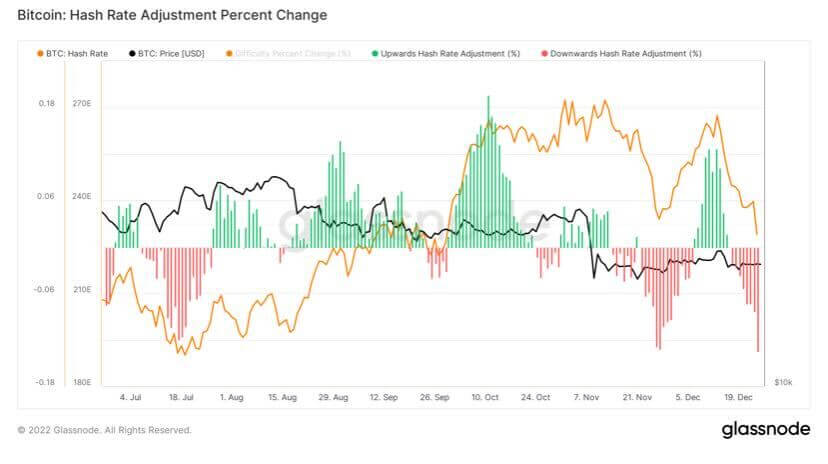BTC block time reaches yearly high as mining hash rate plunges amid arctic blast

The arctic blast in the US has already claimed at least 22 lives and temperatures could dip dangerously below freezing levels. Amid the extreme weather conditions, several Bitcoin (BTC) miners have voluntarily curtailed or shut down operations to help the struggling power grid.
Foundry dropped its hash rate by over 44% or nearly 30 EH/s since the storm. Foundry’s hash rate was down to 42.63 EH/s on Dec. 25 compared to 76.68 EH/s on Dec. 23, according to data from The Block.
The Bitcoin network’s mean hash rate has dropped significantly to 156.36 EH/s on Dec. 24 from 252.98 EH/s on Dec. 21, Glassnode data shows.

Additionally, it is the biggest one-day negative hash rate adjustment in over 6 months — the mean hash rate dipped by over 46% on Dec. 24.

The drop in hash rate signifies that less mining power is devoted to mining BTC. This has caused Bitcoin’s average block time to spike to a yearly high of 16.18 minutes, according to BitInfoCharts data. BTC block time signifies the time it takes to mine a block.
At the same time, the average BTC block confirmation time, i.e, the time it takes to add transactions into a mined block, has more than doubled in a day. According to Blockchain.com data, the average time to confirm a BTC block has jumped from 19.53 minutes on Dec. 23 to 46.78 minutes on Dec. 24.
Furthermore, the mining difficulty is expected to fall by 11.6% during the next adjustment cycle, Joe Burnett, head analyst at Blockware, said on Dec. 24. The next BTC mining difficulty adjustment is expected on Jan. 4, 2023.
Credit: Source link


Comments are closed.